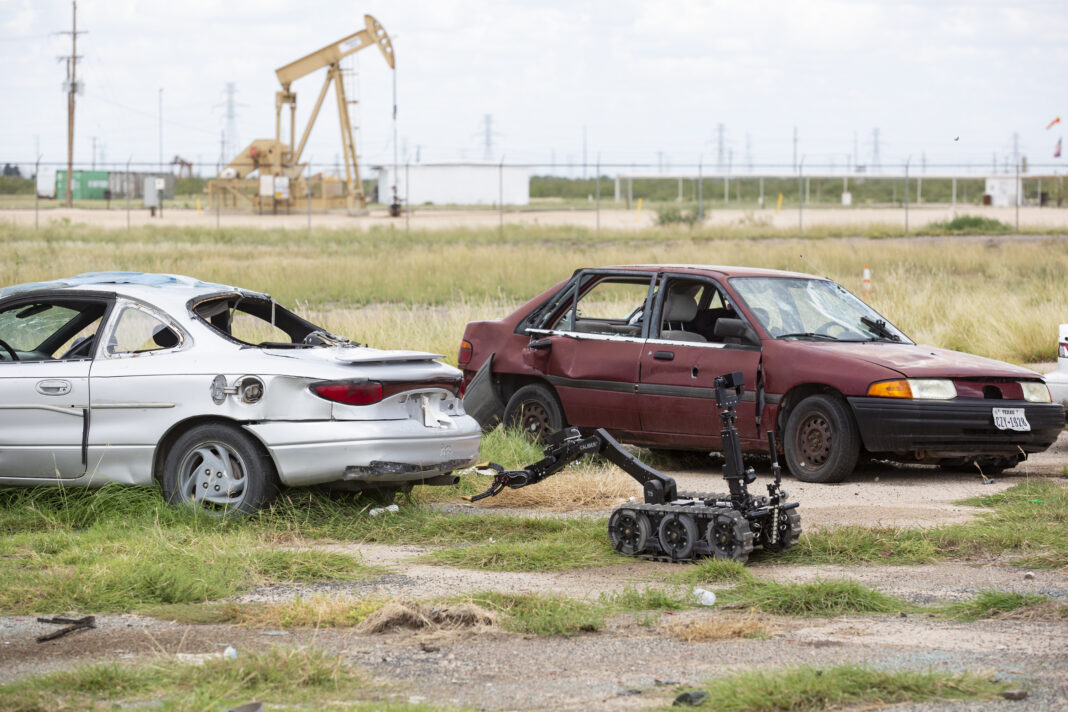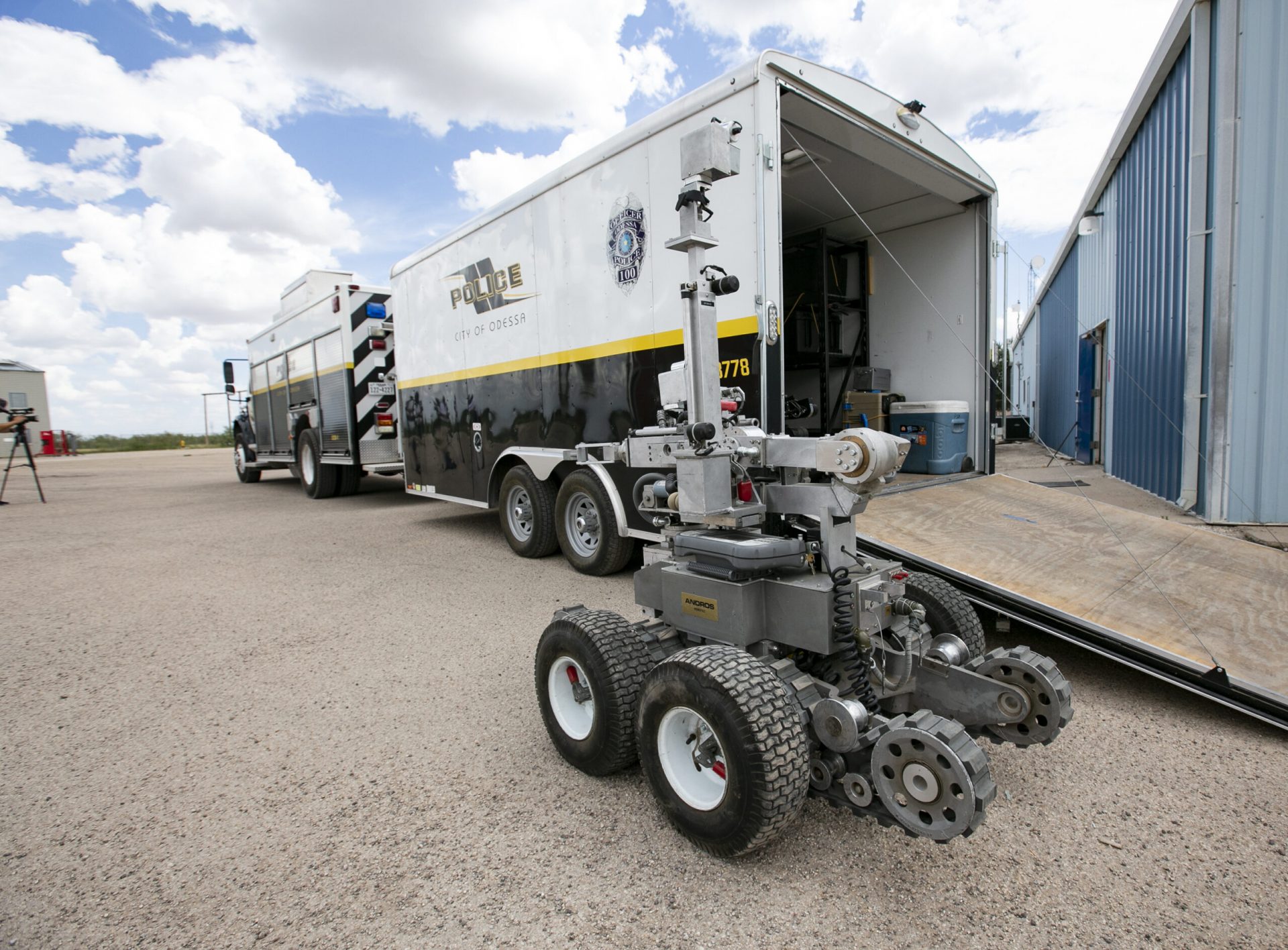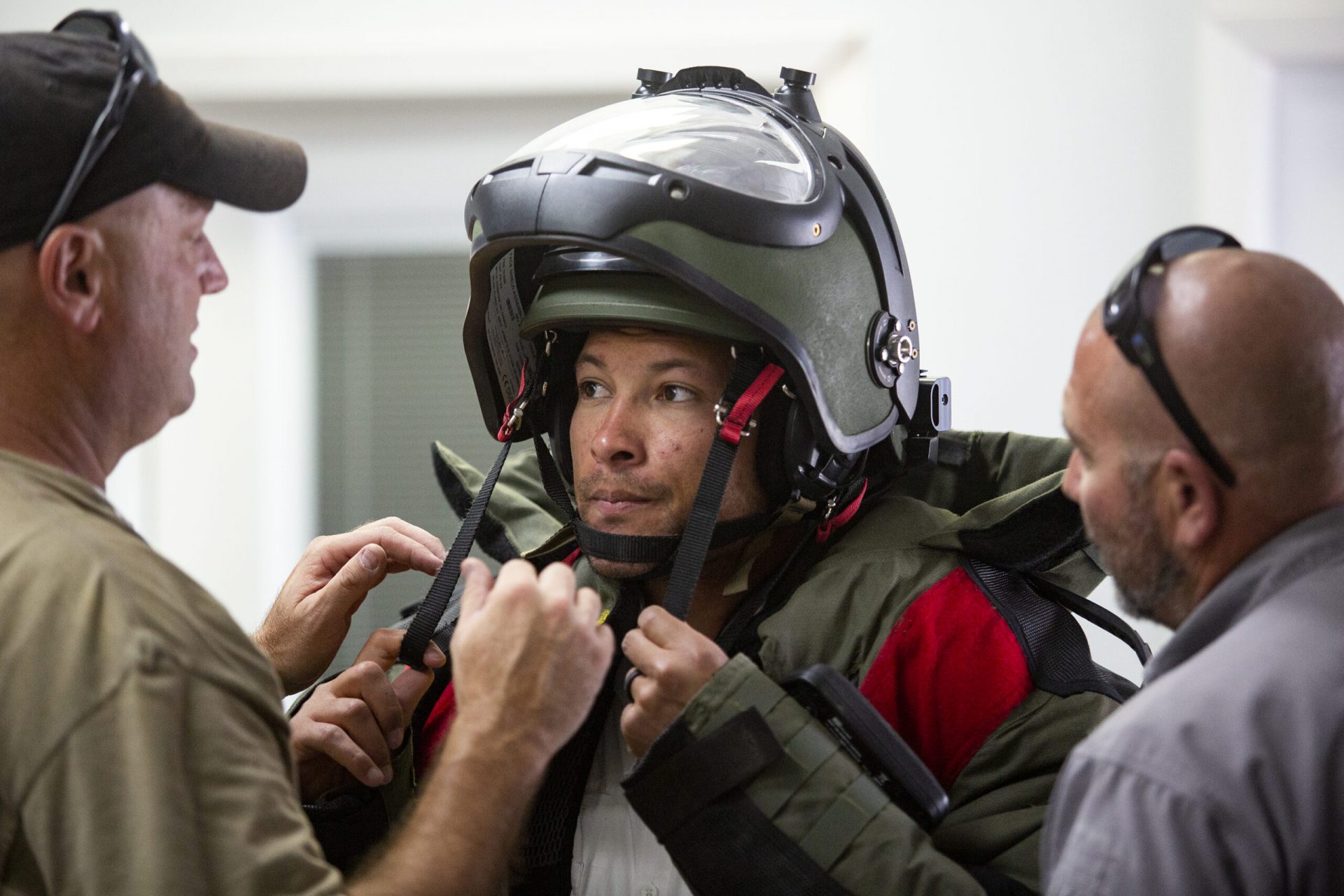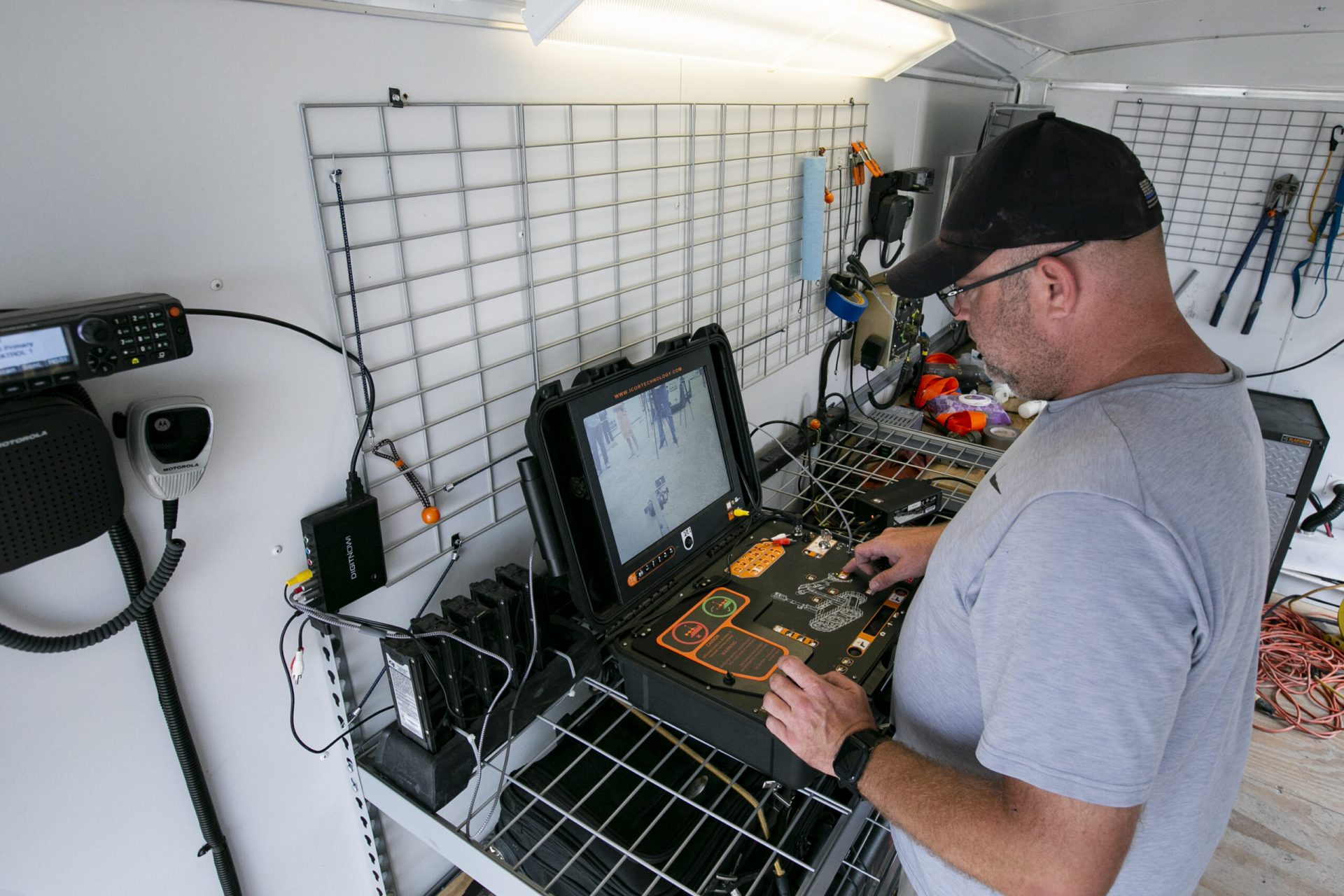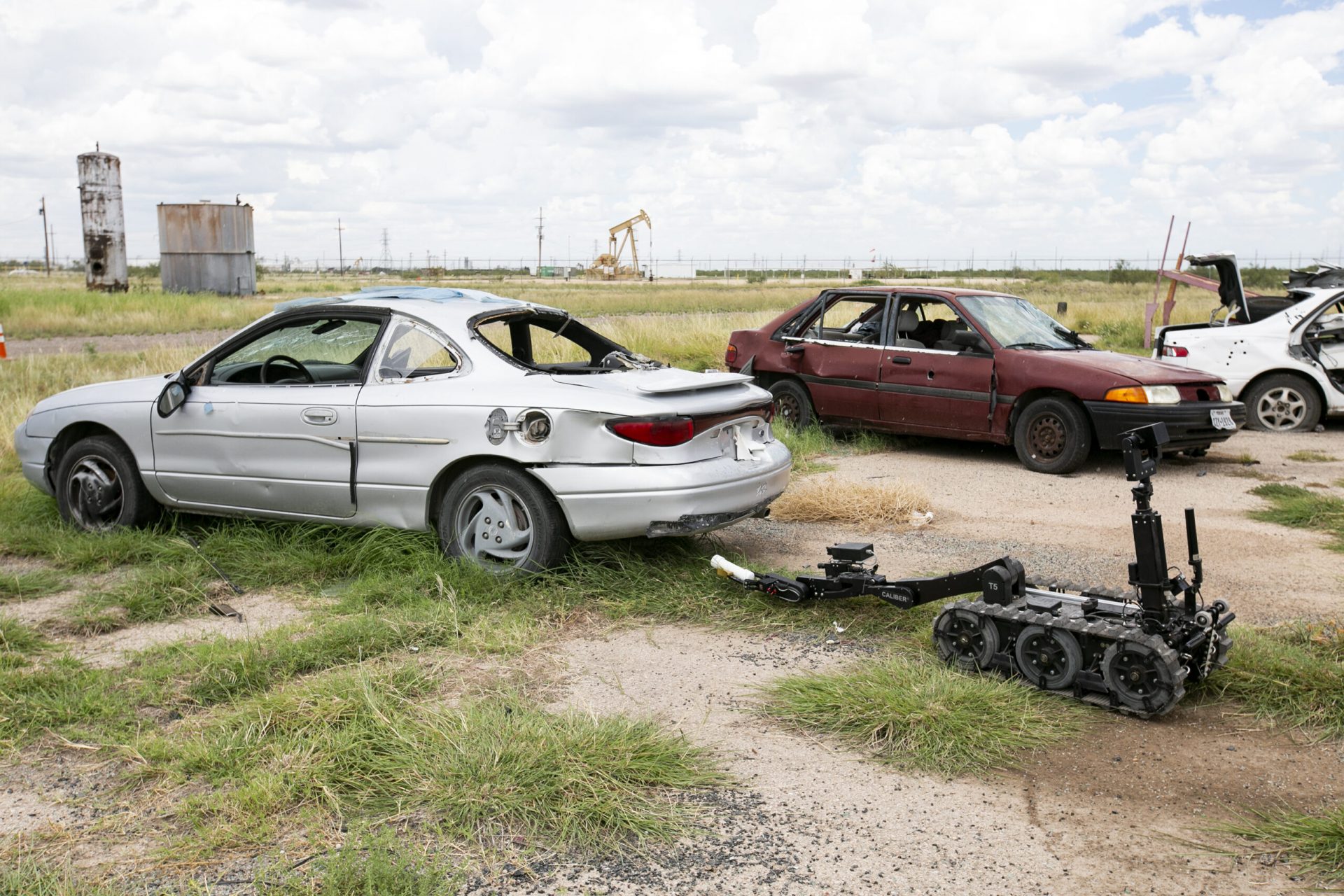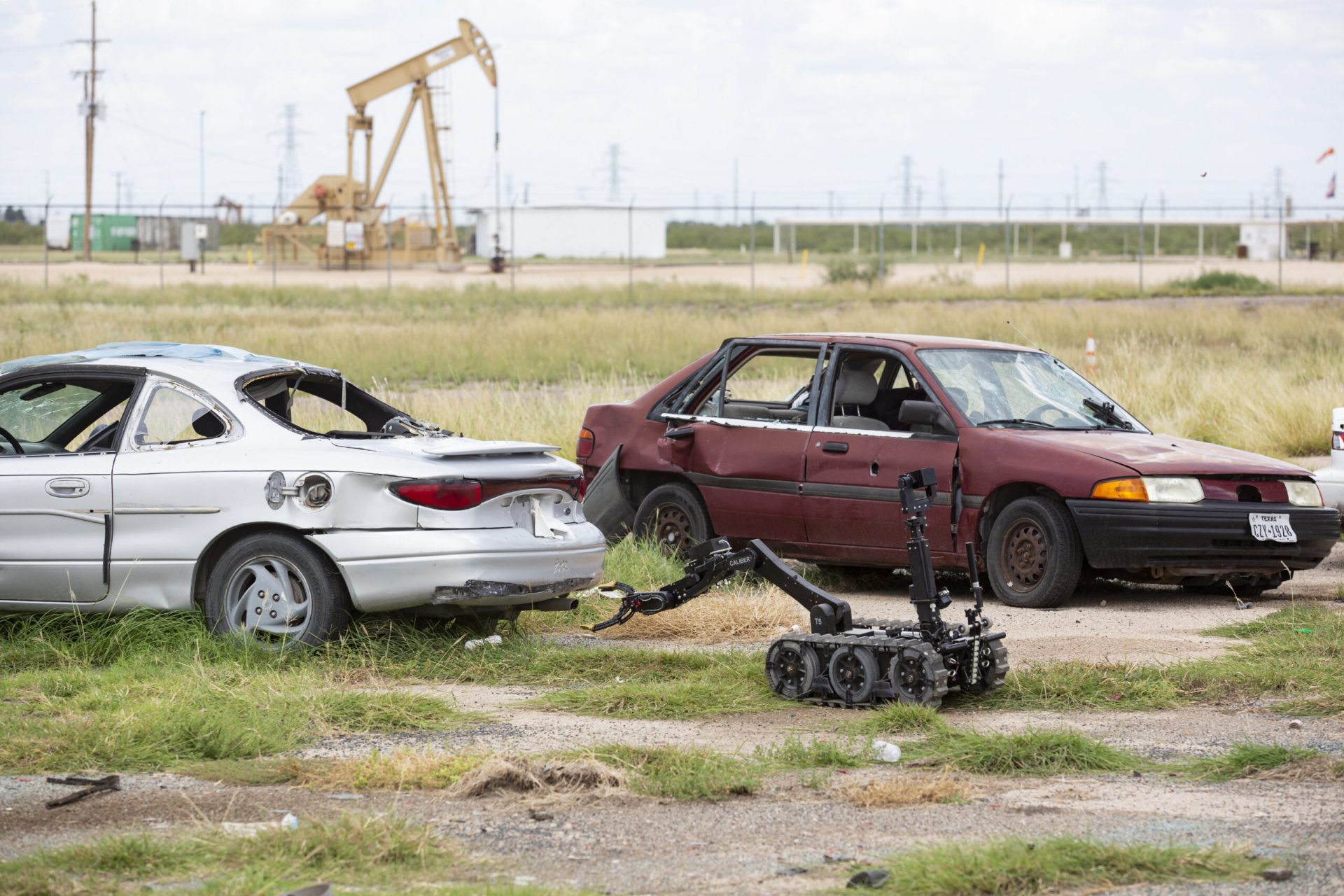On Thursday, members of the Odessa Police Department’s Hazmat Devices Unit conducted a bomb unit training demonstration.
The event took place at the Odessa Fire Rescue training facility at 3000 S. Dixie.
During the demonstration, the OPD Hazmat Devices Unit showed the work of one of their two remote controlled robots pulling a piece of plastic that represented a fake pipe bomb away from one area at the facility and bringing it to another part of the parking lot.
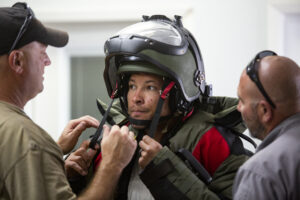
Also at the demonstration, the unit showed Odessa Police Department Corporal Chris Adams getting in one of the bomb suits.
Sgt. Scottie Smith of the robbery homicide unit and the bomb squad commander for the Odessa Police Department said that the demonstration was to give an idea of what his unit does and how they do things as well as some of the tools that they use.
“There are some tools that we don’t put out to the public because we don’t want people to have an idea on how to defeat us,” Smith said. “Mostly, we use robots for pretty much everything if at all possible. If it gets to a point to where we can’t do anything else with the robot, then we have to put someone in the bomb suit, which was demonstrated to make sure everything is safe and take care of everything else.”
In training, each bomb technician must attain hazardous material technician level certification and then attend the six week FBI Hazardous Devices School (HDS) at the Redstone Arsenal in Huntsville, Al.
After completion of the basic training course, each technician must be recertified every three years at HDS.
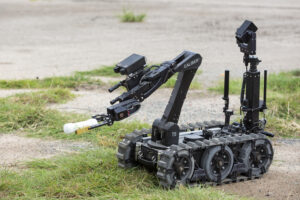
Currently, the bomb squad has an inventory of tools and equipment that provide tremendous assessment and render safe capabilities.
The newest piece of equipment is a Mark VA-1 robotic vehicle.
The bomb squad is also able to provide real time video and audio feeds, digital x-ray imaging and hazardous environment assessments.
Corporal Andrew Garris, who works with the remote controlled robots on the unit says that the object is to try and use the robot as much as possible.
“Our motto for the bomb robots is to start remote, stay remote” Garris said. “We only use the suit if we absolutely have to… For obvious reasons, if anything bad happens to the robot, the robot can be replaced. It’s just a huge safety aspect.”
Garris has been on the squad for six years now but Odessa’s bomb unit has been FBI accredited since 1987 and is one of 450 FBI accredited bomb squads in the nation.
The smaller robot is mainly used for getting into tighter spaces.
“It’s a little easier to get into areas like a mobile home,” Garris said. “The bigger ones can be used for like tearing down windows if we need to or pushing backboards if someone is barricaded in a residence.”
The department’s bomb squad technicians respond to situations that involve explosives, improvised devices, hazardous situations and hazardous materials.
With a responsibility that includes the 17 counties of the Permian Basin region, the bomb squad provides tremendous technical assessment capabilities for these types of incidents.
While the robots are mostly water proof, they do have some limits.
“We can’t go deep into water puddles but for the most part, we can work with rain,” Garris said.
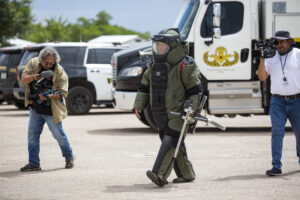
As far as the bomb suit goes, Smith says the temperature in the suit can get very hot.
“It’s approximately 85 pounds by itself and then you add the helmet in,” Smith said. “It gets very hot and it doesn’t matter what the temperature is. It’s hot no matter what.”
Wearing the suit is a basic part of training.
“For tryouts, you have to wear that bomb suit and do certain things and carry certain equipment and then return,” Smith said. “We give you a break and get you hydrated and then put you in what we call a modified level-B which is a lighter suit than what we showed you today. But you get a chemical suit underneath and also have to put on an SCBA …. and you’re breathing from that while you’re doing the second part of the scenario of the tryout.”
Adams spoke about what it was like to put on the suit.
“It’s comparable to putting on a bunch of cold weather gear and walking out in the heat of summer,” Adams said.
Smith said one of the biggest safety precautions when anyone is wearing the bomb suit is overheating.
“They can be in a suit from anywhere to 30 minutes to 45 minutes to an hour and maybe even longer,” Smith said. “After about an hour-and-a-half, whoever is wearing that suit has to come out of it. They’re done and they have to come in and put someone else in that suit to finish taking care of the situation.”
The unit has two search suits and three actual bomb suits, Smith said.
“Search suits we use those for mostly environments where there may be a threat but nothing has been found so it’s a little bit lighter and a little bit easier for us to move,” Smith said. “The bomb suits are for an item where there may be a suspicious package and have to send someone down on it. It has more protection.”
As far as how much protection the suit offers, it depends on the explosion.
“A lot of that depends on what type of explosive we’re talking about and what’s in it and how far away from the package you are,” Smith said. “If you’re right on top of it, you can forget about it. But as you get further away, you’ll have a better survival rate and, in theory, keep you from getting hurt, for the most part.”

